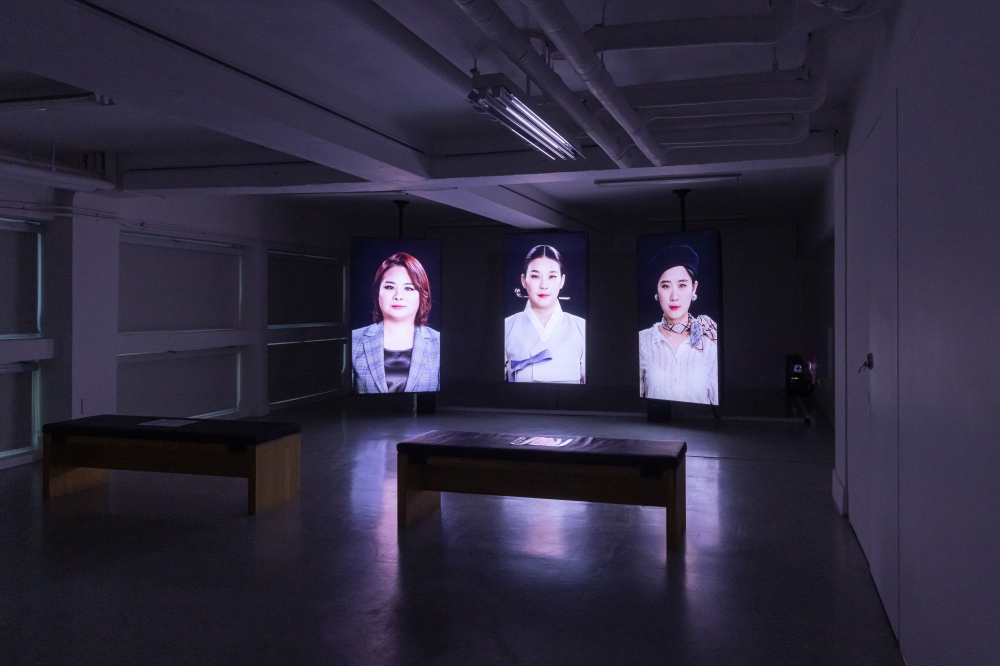사진트리니티:흥보가 다시쓰기 trinity : rewriting the Heungboga
 트리니티:흥보가 다시쓰기 trinity : rewriting the Heungboga 3채널 영상, 4K, 00:07:40 | 2019
트리니티:흥보가 다시쓰기 trinity : rewriting the Heungboga 3채널 영상, 4K, 00:07:40 | 2019
- 등록번호 : 2464
- 작가명 : 이민하
- 자료생성일 : 2021-04-07
- 분류 : 전시
-
요약설명 :
공동작업 : 권송희, 이민하
여성 비하가 늘상 존재해왔던 조선 시대를 배경으로 한 흥보가의 가사에는 현대를 살아가는 우리의 심기를 불편하게 하는 가사들이 존재한다. 3채널 영상 속의 세 명의 여성은 서로 다른 시대를 살아온 여성소리꾼의 모습을 보여준다. 이들은 가사의 내용에 부당함을 느끼면서도 꿋꿋이 전통을 계승하여 무대에서 홀로서기를 하고 있다. 이들 여성소리꾼들이 연대할 수 있는 가능성은 없는 걸까? 전통은 어디까지 고수되어야 하는 건가? 각 채널의 여성들이 보여주는 소극적인 저항은 잔잔한 파도가 되어 옆 시공간의 상대방을 자극한다. 그리고 ‘개사’라고 하는 적극적인 저항의 실마리를 우리에게 던져준다. 각자 다른 음색과 성향을 보여주는 이 세 명의 여성소리꾼은 음악 안에서 서로를 인식하고 연대의 가능성을 타진해본다.
Lyrics of Heungboga, developed in the Joseon Dynasty when women were socially degraded, include those that we may find offensive. Three women in the three-channel video represent singers from different eras. While feeling the unfairness of the lyrics, they firmly stand on their own on the stage succeeding the musical tradition. Isn’t there any possibility for these female singers to unite? How much tradition should be preserved? The passive resistance from the women in the three channels form small waves and stir up their counterparts from other times. They give us the clue for more active resistance of changing lyrics. The three female singers, with distinctive voices and dispositions, recognize one another through music and explore the possibility of solidarity.